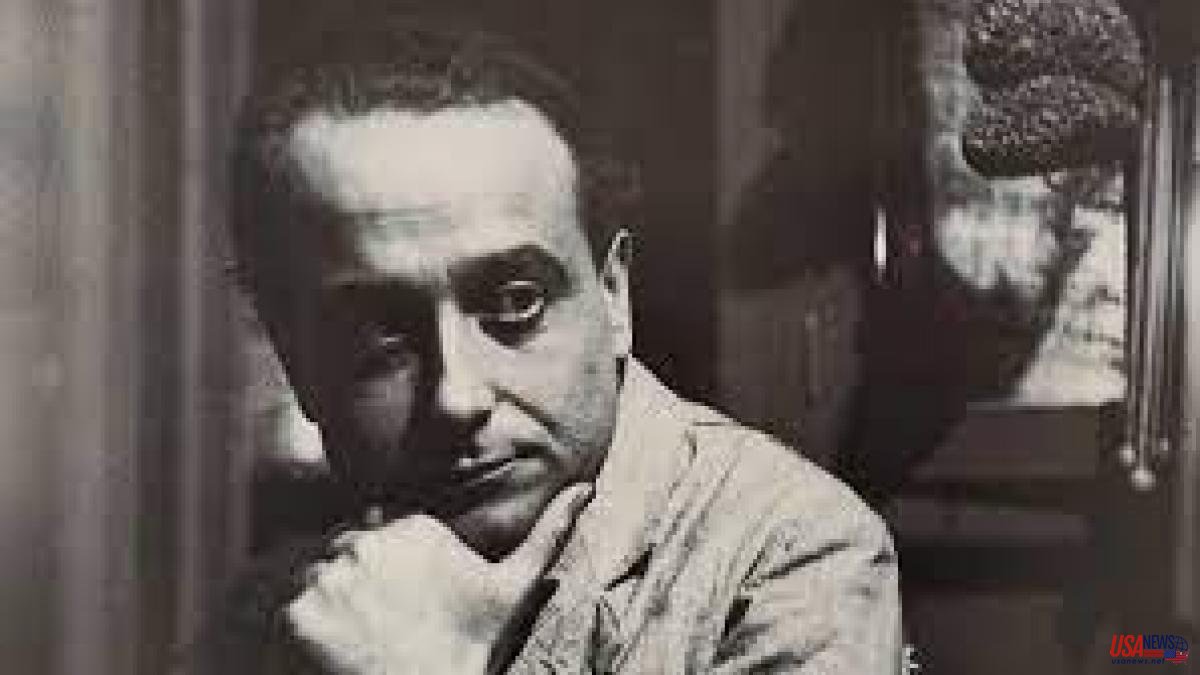It has taken the brothers Cuki and Carles Pons twenty years to collect the extensive work of their grandfather, the Mallorcan artist Josep Pons Frau, and his own contributions and life to ensure that it is exhibited at the Museum of Mallorca, one of the best exhibition centers in the island.
The title, Josep Pons Frau, a plena llum , aims to serve as an introduction to the tour that is exhibited in the museum's rooms from a double perspective: the Mediterranean light that his work gathers, especially unique in his landscapes, but he also wants to fully light that work revisited by other artists.
Josep Pons Frau (Sineu, 1883-Palma, 1952) is a multidisciplinary author, or multidisciplinary, as his grandson Cuki likes to say, who studied at the San Fernando Higher School of Fine Arts in Madrid and who, throughout life, developed a work that combines painting, photography and ceramics. His work is scarcely disseminated because the author bought part of the paintings that he sold, so the exhibition, very complete, presents enormous coherence and unity.
The photographs serve as a model for him to paint monumental landscapes of the Majorcan mountains, with several layers of light that show the depth of the mountains, with suggestive approaches and trees in perspective that break the monotony of forms. The exhibition also shows family portraits and some commissioned, including that of the Majorcan writer Miquel dels Sants Oliver, as well as images of windmills and streets and panoramic views of Palma, with one singularity: the sea is barely visible.
But the photographs are more than just a simple model of inspiration; They are also works in themselves that show, with the precision of an anthropologist, a disappeared Mallorca that the first travelers who visited the island fell in love with. There are daily rural scenes of a way of life that is only known thanks to works such as Pons Frau, collected in a publication by the Palma City Council.
Pons Frau's work is completed with ceramic works that range from religious imagery to illustrate mysteries in the Bonanova Sanctuary to works of an eminently pictorial nature that can still be seen in the roundabout at a crossroads on the Sa Vall estate, owned by the banker Joan March, now in the hands of his heirs.
However, the exhibition is not a mere compilation of the various works developed by the artist. Thanks to the work of his grandchildren, Cuki and Carles Pons, the work is updated and takes on a new life thanks to collaborators as diverse as his own grandchildren, one producer (Cuki), known among other works for being in charge of the ceremony opening and closing ceremony of the JJ.OO. from Barcelona, the other illustrator, who has revised the work of his ancestor. Thus, the exhibition exhibits illustrations by Carles Pons inspired by the work of his grandfather and closes with a video in which the artist's canvases are transformed into 3D works in which photography, painting and video are superimposed in an interesting game of the artist Mariona Omedes who gives life to a new work different from the original.
This exhibition, modest in appearance, holds even more surprises because it unfolds with a matryoshka effect in which new elements appear as it progresses. In this second life of Pons Frau's work, not only his grandchildren have collaborated. A well-known Mallorcan gastronome, Tomeu Arbona, who defines himself as an author of gastronomic archaeology, was inspired by the products shown in Pons Frau's photographs to investigate the roots of Mallorcan gastronomy that he now serves in his renowned gastronomic workshop in Palma.
Fashion design also makes its way into this matryoshka effect. Sebastià Pons, one of the most internationally renowned Mallorcan designers, who has come to show his works in parades in New York, presents several of his creations at the museum in a reciprocal look between both authors in which Sebastià Pons's designs look to the real designs of the photographs of Josep Pons. The painter Christine Monrrow, for her part, pays her particular tribute to Pons Frau with new paintings of works by the Mallorcan artist, some paintings that the painter's grandchildren discovered almost by chance. The last matryoshka is sculptural, a series of works by Ricardo Gago, with sculptures clearly inspired by the compositions of the author from Sineu.
With all this exhibition of various subjects, the exhibition, which will remain open until September 11, shows a graphic and biographical journey of the author through his work but also aims to be an inquiry into the influence he has had on later generations on disciplines as polyhedral and interests as diverse as gastronomy, sculpture, illustration or fashion design.
The exhibition, curated by Carles Pons, with the co-direction of Maria Gracia Salvà and Cuki Pons, is a game of mirrors where this work of violent Mediterranean light, the lights and shadows of the photographs taken by the author throughout his life, but above all it is a game where the artist's work comes to light again reinterpreted by new authors.













